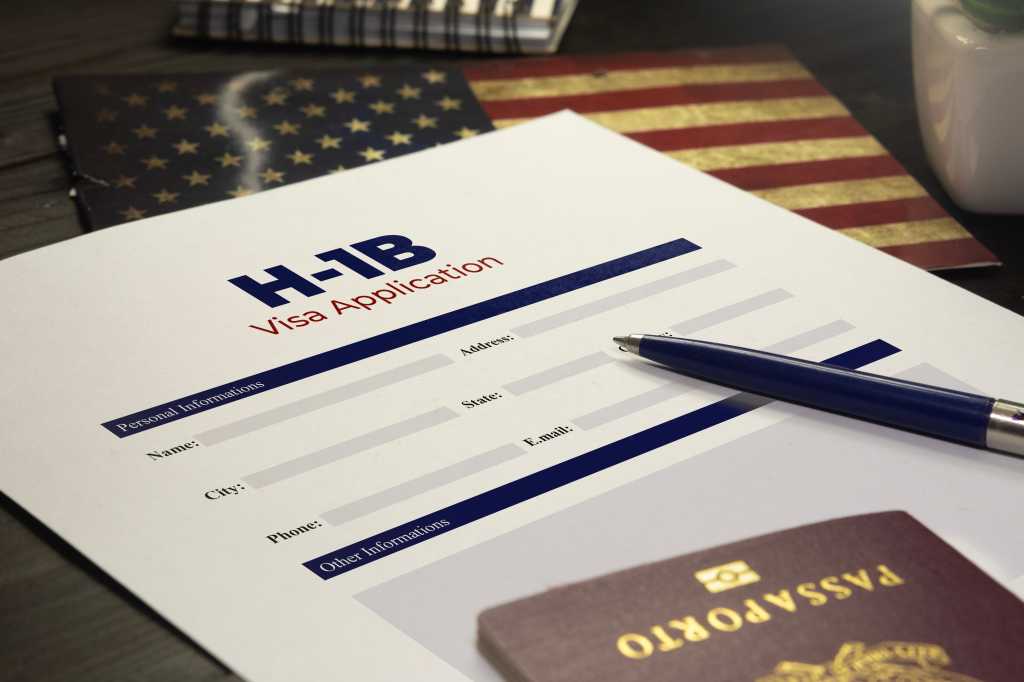While the president wants to drive companies to hire more US residents, the more likely outcome is more jobs for IT workers in Mexico, Columbia, and other Latin American countries.

US President Donald Trump’s decision to jack up the fee for H-1B visas isn’t likely to have a major impact on US jobs, but it will likely benefit another category of foreign IT worker, those in nearshore countries, some experts say.
Trump, in mid-September, signed an executive order raising the initial fee for an H-1B high-skilled foreign worker visa, popular with large US IT companies, from a few hundred dollars to $100,000.
US Commerce Secretary Howard Lutnick suggested that the new costs will discourage US companies from hiring migrant workers for lower wages than what they would pay US employees. The new fees will incentivize US companies to hire more US workers, he argued then.
But many IT hiring experts say the real beneficiaries won’t be US workers because of long-term staffing shortages in several IT specialties; instead, nearshore workers and providers of nearshore services stand to gain the most by the change in policy.
“While efforts to expand US hiring will continue, the simple reality is that the available pool of highly skilled tech workers in the US remains limited regardless of visa policy changes,” says Craig Buckley, senior vice president of global technology solutions at global staffing provider Emapta.
While the Trump administration has clarified that the new fees will apply only to new applicants living outside the US, the talent shortage will still exist, he adds. Offshoring represents a solid path for US companies to find IT workers without paying H-1B fees, according to Buckley.
Turning the page
Given the limited US workforce, Trump’s policy should drive business to nearshore providers and prompt IT companies to turn toward global capacity centers (GCCs), even though H-1B workers make up a small percentage of the US IT workforce, says Steven Hall, chief AI officer at outsourcing-focused IT analyst firm Information Services Group.
“The ongoing risks associated with the use of H-1Bs will cause organizations to be more conservative in the use or sponsorship of H-1Bs,” he says. “Given the relatively low number of H-1Bs, it is unlikely that it will have any meaningful impact on US hiring but will have an outsized impact on the use of higher offshoring or GCCs to mitigate the risk of future legislation.”
Nearshore providers with talent in Mexico, Colombia, and Costa Rica are most likely to benefit, Hall says. There may also be an increased US demand for Canadian IT workers, he adds, although Canada has also tightened its use of visas.
Celeste Anderson, chief revenue officer at nearshore software development provider Jalasoft, agrees that nearshore services will benefit, but she also sees some potential for US workers.
Trump’s policy could drive interest in apprenticeship models, community-college grads with updated certifications, career switchers from adjacent STEM roles, military veterans, and return-to-work programs, she says. US companies would have to restructure their training and retention programs, investments that many firms have “underweighted,” she adds.
“We can expect a dual strategy: fortifying the US core, while augmenting with nearshore squads for agility and scale,” Anderson says. “Where US talent supply runs thin, nearshore bridges the gap.”
Anderson sees demand increasing for IT workers in the Americas, including Mexico, Colombia, Costa Rica, Brazil, Argentina, and Chile. Emerging markets in Latin America such as Peru, Ecuador, and Bolivia will also become strategic differentiators, because of nearshore firms’ investments in digital infrastructure and education pipelines in those countries.
Not just Latin America
Emapta’s Buckley sees a rising interest in nearshore talent, but also in workers at outsourcing services farther afield, with many offshoring providers offering IT workers who will work the same hours as US teams. Interest in markets with highly educated IT workers, including the Philippines, Malaysia, Sri Lanka, India, Macedonia, Vietnam, and Colombia, is growing, he adds.
“For many US tech companies, this policy change underscores the need to rethink how they access critical talent, particularly in software development, QA, data science, cybersecurity, and cloud engineering,” Buckley says. “While some large enterprises with deep pockets may take a wait-and-see approach, many are actively exploring alternatives, including global outsourcing.”
In addition, Trump’s new policy may change the way US companies recruit young IT workers to study at US colleges, says immigration lawyer Loren Locke. With low H-1B fees, US IT firms would bring students to the US under the F-1 student visa, then transition them to the Optional Practical Training (OPT) program, which allows foreign IT students to work in the US for three years following graduation. After the OPT eligibility expired, IT companies would then transition the graduates to H-1B visas.
The increased fees will force US IT firms to rethink this process, Locke says. “The $100,000 H-1B fee means companies will likely continue recruiting these students for OPT positions but then deploy them to nearshore offices in Canada or Mexico after their OPT expires rather than paying six figures to keep them in the US,” she adds. “We’re essentially training top talent at American universities only to export them to compete against us.”
Nearshore complications
Locke sees a shift toward nearshore IT services, but while nearshore workers can seem like an attractive alternative to high H-1B fees, the practice can bring its own complications, she says.
Large multinational corporations like Amazon or Microsoft already have established international operations with the infrastructure to handle cross-border compliance, tax implications, and legal complexities, she says.
“For them, shifting H-1B-bound talent to existing offices in Toronto, Vancouver, or Mexico City is a relatively straightforward operational adjustment,” Locke adds. “They’ve already invested in the legal and HR frameworks needed to manage international workforces, so the $100,000 H-1B fee just accelerates a shift they’re already equipped to make.”
But smaller companies may not have the capacity to create permanent establishment issues for tax purposes, navigate foreign labor laws, or manage cross-border data privacy compliance, she adds.
“The $100,000 H-1B fee might seem like a one-time immigration cost, but the decision to nearshore instead triggers a cascade of international legal and operational complexities that require entirely different expertise,” Locke says. “So the $100,000 H-1B fee essentially creates a two-tiered system: Large multinationals have the flexibility to avoid the fee through nearshoring, while smaller employers lose access to international talent altogether.”










